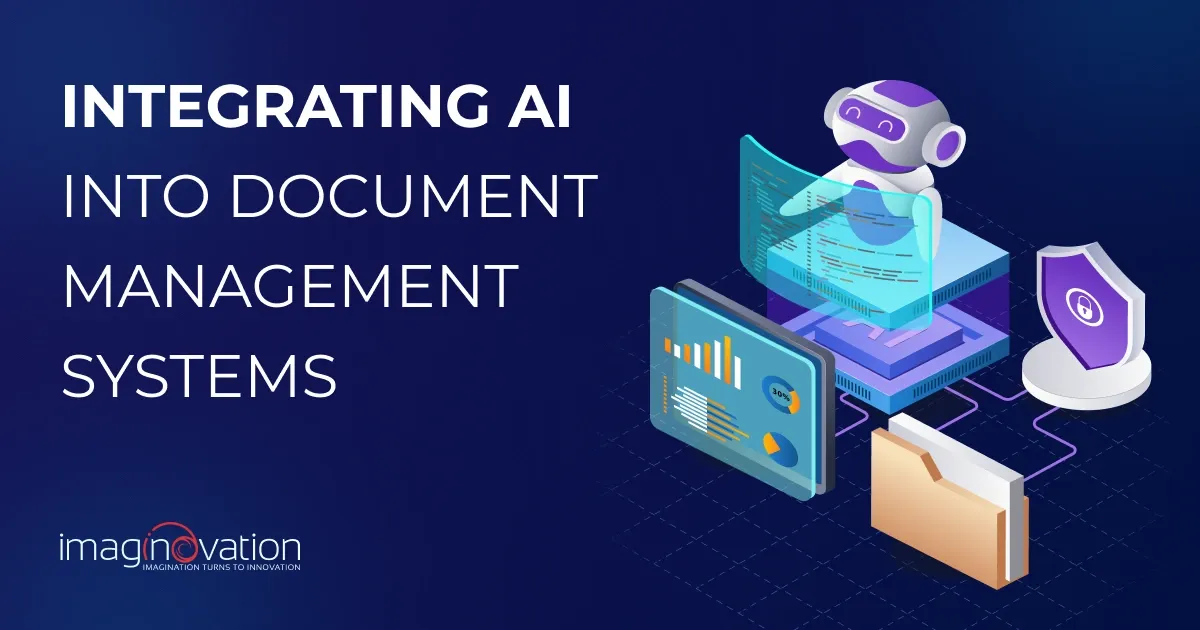To estimate the cost of building a website or an app, use our app cost calculator tool.
Modern software development, fueled by cutting-edge technologies, is accelerating remarkably. However, this thrilling journey is often dotted with unexpected hurdles that can derail a project's success.
It's vital to accept that, despite thorough planning, software project pitfalls are inevitable. No tech giant or start-up is exempt from these challenges—consider Facebook's global outage in 2021 or the U.S. National Weather Service data loss in 2019.
Embracing the reality of potential pitfalls is crucial. By staying alert and leveraging innovative solutions, we can navigate around common software project issues.
Identifying these pitfalls can pave the way for smoother, more successful project outcomes. Are you ready to uncover the common problems and learn how to avoid software development mistakes? Let’s dive in.
1. Inadequate Planning and Requirement Gathering
Picture this: your soldiers go to battle. But hold on! They have no armor or weapons to use and lack the training to top it. You’ve guessed it! The scenario needs a touch of better planning. Similarly, in light of software development, project planning plays a crucial role. It will help outcomes turn out smoothly. Plus, it helps evade project budgets being overstretched, deadlines missed, or team members being demotivated.
Poor planning and vague requirements can lead to issues such as scope creep, which derail a project from its original framework. Further, it can impact time, resources, and budget, resulting in delays.
Measures to Avoid it:
Kicking off a new software project with a strong foundation built on reliable data is crucial for success. The requirements-gathering phase is essential as it provides valuable insights, necessary for defining the project scope.
Employing techniques such as stakeholder interviews, interactive workshops, and thorough requirement documentation ensures clarity and consensus among team members and stakeholders. These insights streamline the creation of a formal process for impact assessment and effective management of change requests. By doing so, the project remains on track, sticks to its objectives, and achieves successful outcomes.
2. Poor Project Management
What happens if the cogs and wheels in your project don't run in unison? You’re right—the misalignment often causes inefficiencies. Moreover, you can face critical challenges throughout the project lifecycle. Consider this compelling statistic: an IBM report reveals that 68% of project failures result from poor management.
The repercussions of poor project management are substantial. They have the potential to damage your reputation, delay project schedules, and cause cost overruns. Furthermore, it can lead to communication breakdowns, increased expenses, and inadequate resource allocation.
Therefore, optimizing your project plan is crucial. A well-optimized plan ensures timely delivery, positive client feedback, and a motivated, satisfied team. By focusing on effective management, you can achieve the best results and build a stellar reputation.
Measures to Avoid it:
To ensure project success, it is vital to embrace transformative project management best practices: set clear SMART goals, foster open communication, and harness powerful project management tools. It will help set clear goals and create a strategic vision that aligns and motivates your team.
Moreover, open communication through regular meetings and collaborative platforms like Slack or Microsoft Teams keeps everyone informed and empowered to swiftly address issues. It is also helpful to leverage cutting-edge tools like Asana, Trello, or Microsoft Project to streamline task tracking, optimize deadline management, and centralize documentation.
Regular progress reviews and proactive adjustments will help mitigate risks. By adopting these forward-thinking practices, your projects will run smoothly. Further, you can look forward to delivering outstanding results, earning positive client feedback, inspiring your team, and elevating your business reputation.
3. Insufficient Testing and Quality Assurance
Poor or inadequate testing and quality assurance (QA) can have severe consequences, leading to product failures riddled with bugs and defects. This lack of diligence can impact the security, usability, and functionality of the product, resulting in customer dissatisfaction, loss of trust, and potential legal liabilities. Moreover, developers and testers often neglect user feedback, which further contributes to a low-quality product and damages the brand's reputation.
There are numerous instances where poor QA has led to significant product failures. One notable example is from 2012 when Knight Capital, a prominent market maker in US equities, experienced a trading glitch that resulted in a staggering $440 million loss in just 45 minutes. This catastrophic event was caused by a faulty software update that had not been properly tested and deployed.
Measures to Avoid it:
Testing and quality assurance are crucial for delivering top-notch products. You can ensure product excellence, using the latest technologies, proactive strategies, and a solid testing plan—including unit, integration, system, and user acceptance testing. Automated testing tools further boost efficiency. Don't forget to listen to user feedback—it's the key to creating products that meet expectations and stand out in quality.
Also Read: Why Software Testing Teams Are Critical for Success
4. Lack of Communication and Collaboration

Ineffective communication often hampers the project’s success. Here's an exciting statistic. According to a study, companies risk $135 million for every $1 billion spent on a project. Further, the new research indicates that $75 million of that $135 million (56%) is placed at risk attributed to ineffective communications. The figures highlight that there is a critical need for organizations to address communications deficiencies at the enterprise level.
Here’s the thing—when communication with stakeholders is riddled with ambiguity, lack of clarity, or inconsistency, it can cause confusion and misalignment. Project managers may not use a communication plan. Thus the communication purpose, frequency, and responsibility are ill-defined, leading to risking the project.
Measures to Avoid it:
Fostering a culture where employees feel empowered to share their ideas, thoughts, and insights can significantly enhance project growth and overall success. Teamwork is strengthened through collaboration tools that promote productivity and harmonious cooperation.
Post-pandemic, the business landscape has seen a surge of real-time collaboration tools, video conferencing, and task management tools. Selecting the right tools can greatly benefit a project. Project managers should leverage these technologies to hold regular meetings and ensure all team members and stakeholders remain aligned with the project's goals.
5. Ignoring Risk Management
Ignoring risks at any stage of a project can lead to unexpected challenges and can derail your business operations. Common pitfalls include missing early risk identification, lacking a strong mitigation strategy, underestimating risks, poor communication, and inadequate monitoring.
Developing a robust risk mitigation plan is vital. It reduces risk exposure and helps prevent issues from arising, ensuring smoother and more predictable project outcomes.
Measures to Avoid it:
Performing a risk assessment is crucial for anticipating and managing potential problems in any software project. It's essential to evaluate all aspects of the project, from technical challenges to stakeholder concerns, and assess the likelihood and impact of each risk. The insights with the risk identification process can help develop a comprehensive risk management plan.
Regularly reviewing and updating the risk management plan throughout the project is just as important. It is only natural that as the project progresses, new risks may emerge. Moreover, the nature or severity of existing risks may change.
Periodic reviews ensure the plan remains relevant and effective, allowing the project team to adapt to evolving circumstances and maintain control over potential issues. It is great to develop a proactive approach, which ensures seamless project execution and delivers quality outcomes.
6. Overlooking User Experience and Feedback
Starting a new software project is an exciting opportunity to design experiences that users will truly enjoy. The user interface (UI) and user experience (UX) of a software application are pivotal to its success.
However, in a world where exceptional UI/UX thrives, there's also the risk of encountering poor UX. This typically arises from overlooking or misunderstanding user needs, expectations, and feedback. It's evident that poor UX design can frustrate users and lead them to abandon your product, potentially damaging your brand reputation and business outcomes.
Measures to Avoid it:
Prioritizing user experience is the key to your project’s success. It involves conducting usability testing and integrating user feedback throughout the development process. This approach ultimately transforms user experiences into catalysts for phenomenal business growth.
Whether you're enhancing existing software or beginning a new software development journey, focusing on intuitive and user-friendly design principles is essential. These efforts yield delighted users and drive business growth in the digital age.
7. Inadequate Resource Management
Ignoring signs of resource overallocation, such as skill shortages, tight deadlines, or unclear schedules, can lead to detrimental outcomes for projects. It often results in increased stress, burnout, and decreased productivity among team members, ultimately causing project delays.
The impact of overallocation on projects is profound. Overloading resources not only leads to burnout and reduced productivity but also lowers morale and engagement among employees. The cascading effects can be seen in more errors, missing deadlines, and lesser collaboration.
Research indicates that 63% of employees experiencing burnout are more likely to take sick leave and consider changing jobs, underscoring the importance of optimal resource allocation for enhancing employee productivity.
Measures to Avoid it:
Resource management continues to play a pivotal role and it is essential to employ effective resource management strategies and optimize resource allocation and utilization. There are many popular resource management tools that can help track and optimize the use of these resources, which include Microsoft Project, Trello, Asana, and Smartsheet, amongst others.
Resource management tools provide visibility, optimization, and forecasting capabilities, while balancing workloads involves prioritizing tasks, analyzing workloads, and planning capacity to avoid overburdening team members.
Ensuring the right mix of skills involves skill assessments, training, cross-training, and hiring or outsourcing when necessary. These strategies collectively help in optimizing resource use, improving efficiency, and achieving project goals.
8. Failure to Adapt to Changes

In today’s fast-paced and complex world, adaptability in software projects is more crucial than ever. It's vital to adjust approaches, expectations, actions, and requirements as they evolve. A software project that can't embrace change risks becoming obsolete and unsuccessful.
Resistance to change and rigid processes can jeopardize a project's success, making it essential to address these challenges effectively. Embracing flexibility and staying agile can mean the difference between a project's failure and its triumph.
Measures to Avoid it:
Adaptability is like a muscle that one needs to focus on strengthening in any organization. The outcome often results in remarkable products. Embracing change becomes second nature, which leads to proactive planning and effective contingency strategies. Problem-solving transforms into a delightful challenge as the team starts thinking outside the box.
What can help further is adopting agile development methodologies and tools. The tools can help manage change and boost flexibility. For organizations, this approach fosters a culture of continuous improvement, helping them adapt to evolving requirements and market conditions with ease.
9. Misalignment with Business Goals
In the business landscape, many organizations grapple with misalignment and lack of clarity between business goals and overall strategy. When there's a disconnect, confusion and conflicting expectations become commonplace, leading to decreased quality and performance. This misalignment isn't just a minor hiccup—it can result in significant financial losses as resources are wasted on projects that don’t advance the company's strategic objectives.
Misaligned projects not only waste resources but also divert attention from the organization’s primary goals. This inefficiency impacts more than just operations; it demoralizes teams. Without a clear alignment with strategic objectives, project managers and PMOs struggle to motivate their teams and maintain a sense of purpose, leading to lower productivity, reduced project success rates, and delayed timelines.
By fostering clear alignment and purposeful planning, organizations can ensure their projects drive real value and keep their teams inspired and focused.
Measures to Avoid it:
One great approach is to check if the business objectives are SMART—specific, measurable, achievable, relevant, and time-bound—as it can be a game-changer. It’s equally crucial to align these goals with the organization’s strategic vision and mission.
Engaging key stakeholders in defining and validating these objectives, and maintaining clear and consistent communication throughout the project lifecycle, can make all the difference.
Regularly reviewing project goals to ensure they stay aligned with business objectives keeps everyone on track and focused on what truly matters. By doing so, you create a clear path to success and ensure your team is always moving in the right direction.
10. Lack of Post-Launch Support and Maintenance
Your new software project needs a rock-solid post-launch maintenance plan to keep everything running seamlessly and avoid the chaos of neglected updates and unfixed bugs.
Let’s look at a good example - Fastly, a major content delivery network provider, had a routine configuration change by a customer, which unfortunately triggered a hidden bug. It caused 85% of Fastly's network to fail. This glitch brought down heavyweights like Amazon, The BBC, Reddit, and eBay, demonstrating the massive fallout of neglected software maintenance.
This incident highlights the critical importance of proactively addressing software vulnerabilities. Thus, ignoring maintenance can lead to operational chaos, legal headaches, and major business disruptions. A cohesive maintenance plan isn't just important—it's essential for keeping your software reliable and your business safe.
Measures to Avoid it:
In today's interconnected digital world, regular software upkeep is not just a preventive measure but a strategic business practice. Developing a comprehensive post-launch support and maintenance plan is crucial for your software's sustained success. This plan should encompass regular updates to enhance security, features, performance, and compatibility.
A proactive approach to issue resolution is essential, involving continuous monitoring, error logging, maintenance checks, and incorporating user feedback. Additionally, offering responsive user support through a help desk, a knowledge base, live support options, and user training ensures high user satisfaction. By focusing on these elements, you can ensure your software remains reliable, efficient, and user-friendly, driving long-term success.
Ensure Project Success with Imaginovation’s Expertise
In the fast-paced world of software development services, unforeseen challenges can derail projects. Strategic planning and avoiding common pitfalls are essential for success.
Issues like inadequate planning and vague requirements often lead to scope creep and delays. Clear goals, open communication, and effective management tools are key to avoiding inefficiencies and misalignment.
Insufficient testing and quality assurance result in unreliable products. Robust testing plans and user feedback integration are crucial for delivering a polished product. Effective communication fosters transparency and collaboration, key elements for project success.
Risk management is vital; proactive risk assessment and regular reviews keep projects on track. Prioritizing user experience and feedback ensures products meet needs and drive growth. Effective resource management prevents burnout and boosts productivity, while adaptability turns setbacks into innovation opportunities.
Recognizing these pitfalls and strategic planning ensures smooth navigation and exceptional results in software development projects. For top-notch professional assistance, partner with Imaginovation. Our expert team excels in planning, management, and execution, guiding you through custom software solutions designed for your business needs.











